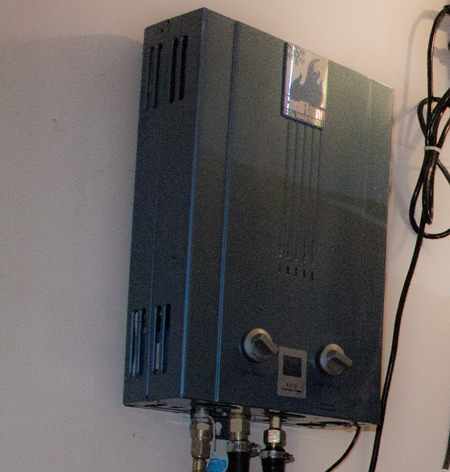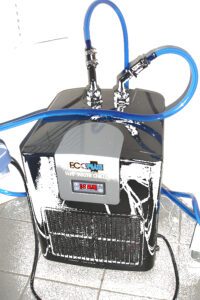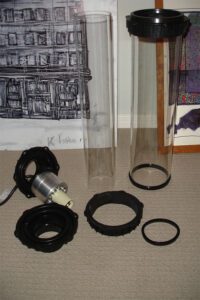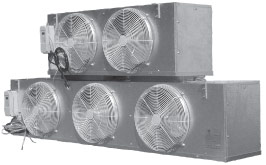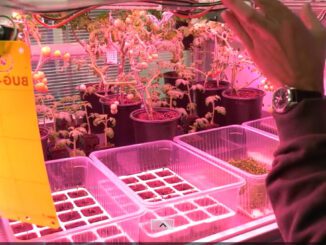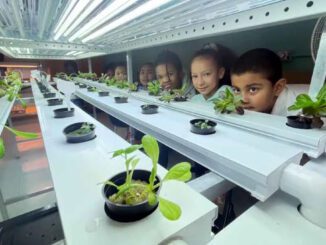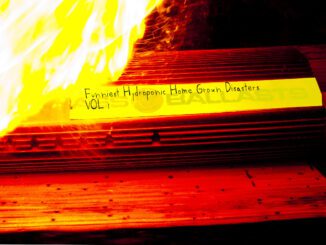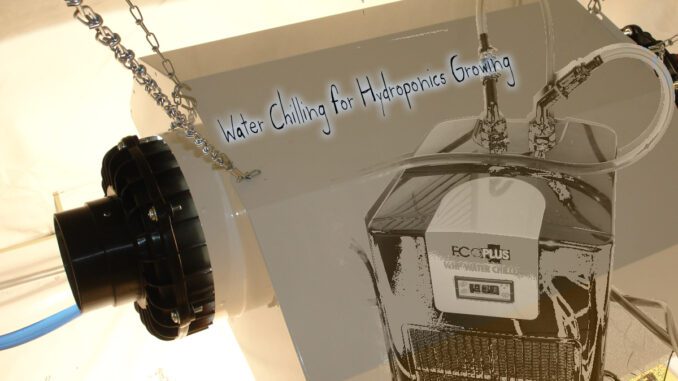
Water Chilling for Hydroponics Growing Environments
Water chilling for hydroponics growing environments is useful in capturing and exchanging unwanted heat generated by growing appliances or resulting from the surrounding environment.
Using water to cool reservoirs, lighting, the air and gas fired CO2 generators can lower electrical costs ,and believe it or not, also save money on water.
Say what–save water with water cooling?
That’s right, by using a closed loop water chilling system, unwanted heat is captured and scrubbed away into the external environment more efficiently versus air cooling methods. A healthier growing environment running at optimal temperatures will conserve crop waterings. Since it’s a closed loop, you don’t lose water, so it’s actually very good for water conservation-something to consider in many regions this coming summer 2014.
Water Cooled Gas-Fired CO2 Generators
When a traditional gas-fired CO2 generator becomes activated, it burns natural gas or propane in a very clean and controlled manner to produce water vapour, heat and of course carbon dioxide to stimulate more productive growth. While your plants can handle warmer climates with more CO2 better than with lower levels, the unwanted heat can be outrageous during warmer months with HID lamps operating.
Water-cooled models operate in similar principle to point-of-use hot water heaters, commonly seen in the WC overseas. With these types of CO2 generators, it can take a little more to install, but once that’s done, they will operate with 90% less heat over common generators, typically have higher outputs and more safety advantages too.
Hydroponics Reservoir Chillers and Heat Exchanger Coils
Savvy hydroponics growers know that their plants will do great in slightly warmer temperatures when the root system is kept highly oxygenated and slightly chilled via the nutrient solution surrounding the root system, for example at 65 Deg F, with air temperatures being upwards of 85 Deg F with some CO2 enrichment in the growing environment. Like soaking your feet in a cool tub on a hot day.
If using a single reservoir, an active water chiller (above) , like the kind they use for aquarium applications, is perfect-just hook it up with a small circulation pump to your reservoir, set the temperature and there it will remain.
With multiple reservoirs, you follow the same principle, except get a bigger active water chiller and build a manifold that has solenoid gates, controlled via thermostat or grow room automation to open flow as needed.
The cool flow of chilled water will run through cooling coils (above) , typically fabricated of stainless steel or titanium, that are placed in the reservoirs. The cool flowing water absorbs heat from the reservoir, returning back to the main chilled reservoir. The cool chilled water and the nutrient solutions in the various reservoirs never mix-the heat is removed via the closed loop cooling coils running off the main chilled header.
Water Cooled Lighting
There is water cooled lighting for HID (above) applications-it has been made available in the form of several different generations of innovation from different companies. It has always been met with mixed reviews, and is in fact a viable technology for certain applications and management methods.
Air to Water Heat Exchangers (Cooling Grow Room Air)
Propeller fan forced air to water heat exchangers (above) have been widely used for grow room and CEA greenhouse applications for some time now. Essentially, something like a series of radiator coils (with much more surface area than those in an automobile radiator) carries a flow of cold water through, when a solenoid valve opens the flow by a rise in temperature. The propeller fans push the warm from the growing area through the coils, which capture a lot of the heat and excess humidity from the air.
If a large volume of water is held in a tank buried several feet below the ground, geothermal cooling, along with a small amount of powered chilling from an active water chiller can scrub away enough heat and bring the water to very cold temperatures once the lights are off. Once the lights are running an the air heats up, the volume of water, the temperature it was chilled to and the efficiency of the system relative to the deman will determine how effective the installation will be, among other considerations.

